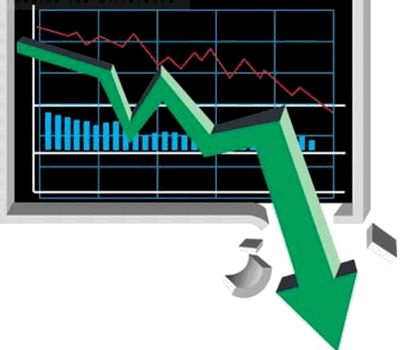|
This is an old article on the 2008 financial crash that I wrote for Swifteconomics.com, which is now sadly defunct, that I would like to repost here. Hope you enjoy:
The financial crisis has long since turned into a severe recession, having just reached its 17th month. Unemployment reached 8.9% in May and, despite recent upticks, the stock market remains in the tank. Why did this happen? A whole host of explanations have been given, from across the political spectrum. However, by far and away the most common is the relaxed lending standards in the mortgage market, which caused a housing bubble, collapsing the financial system in upon its deregulated self. In this first part of my multi-part series on the financial crisis, I will evaluate this claim. Did deregulation cause our economy to collapse? The answer is, well kinda. Often, when deregulation is blamed, no specifics are given. In Barack Obama’s inauguration speech he only said, “…this crisis has reminded us that without a watchful eye, the market can spin out of control.” (1) When specifics are given, the finger is usually pointed at the Gramm-Leach-Bliley Act, which overturned much of the Glass-Steagall Act of 1933. Gramm-Leach-Bliley effectively eliminated barriers between investment banks, commercial banks and insurance companies. The idea behind keeping these institutions separate was to prevent conflicts of interest when evaluating risk. The lack of these barriers is blamed for some of the rampant speculation in the housing market. Others point to a general lack of regulation in the mortgage industry. Most banking institutions gave what were called “stated income” loans. In essence, you told the bank how much money you made, they would take your word for it without a second thought,and give you several hundred thousand dollars to buy a home with. Since shockingly, people are not always honest, this put many homeowners in loans they could not afford. This also created the dreaded NINJA loan (No Income No Job No Assets). NINJA’s are typically bad at making their payments. A lack of regulation is also blamed for allowing adjustable rate mortgages to become commonplace, especially in the sub-prime market. These loans would start out with a teaser rate and then, after a year or two, adjust to a much higher rate. When real estate was appreciating, this was fine, the homeowner could simply refinance. Unfortunately, once real estate began to depreciate, many homeowners found themselves unable to pay the increased mortgage payments, and without enough equity to refinance. All of this makes a pretty compelling argument; however, it’s missing some key ingredients. First of all, there is already a lot of regulation. There’s a ridiculous amount of regulation in fact. As Austrian economist, Tom Dilorenzo clarifies, “…we have 15 cabinet departments devoted to regulating different aspects of the economy. There are over 100 federal regulatory agencies. There are 73,000 pages of regulations in the federal register. And not to mention state and local governments that have hundreds and hundreds more regulatory agencies that regulate everything from zoning to anti-trust, to everything else.” (2) Furthermore, the housing market was not only not deregulated, it was often regulated in the opposite direction. Many government programs (such as Fannie Mae, Freddie Mac and the Community Reinvestment Act, all to be discussed further in part 2) put as much pressure as possible on lenders to increase the availability of credit. All with the goal of creating what George Bush called, “an ownership society.” If there still was a lot of regulation, what exactly are we blaming? What does deregulation even mean? Deregulation should mean to remove all government barriers from any given industry. However, whether they know it or not, this is not what anyone is referring to when they say “deregulation.” Unfortunately, the term “deregulation” is basically useless now. Let’s look back to the Enron debacle, which was also blamed on deregulation, to see how this misunderstanding plays out. Nobel Laureate, Paul Krugman, professed that Enron’s illegal behavior in California, which lead to rolling black outs, was caused by “…an attempt to give market forces freer rein, by deregulating the market for electricity, [which] turned into a disaster. The nature of the disaster was obscured by rigid free-market prejudices.” (3) However, what was touted as deregulation was nothing of the sort. As journalist Timothy Carney explains: “What California tried, and Enron “gamed,” was really reregulation. It was freer than the old system, but in such a way that called for more government meddling and rules. Not only did the complex rules allow Enron to get rich, it also led to the price spikes, the energy shortages, and the blackouts that Californians suffered in 2000 and 2001.” (4) Cato Institute Scholar, Jerry Taylor elaborates further saying, “On balance, Enron was an enemy, not an ally of free markets. Enron was more interested in rigging the marketplace with rules and regulations to advantage itself at the expense of competitors and consumers than in making money the old fashioned way.” Enron took advantage of price controls and tariffs to make a mess of California’s energy market. By definition, there can be no price controls and tariffs in a deregulated market. By Taylor’s estimation, if Enron had been unable to take advantage of the strange new regulations, as well as other government support, “…Enron would probably still be a small-time pipeline company.” (5) And what was true with Enron was even more true with major mortgage institutions. There was no deregulation in the lending industry. Instead, there was simply reregulation. Lending standards were loosened some, but many regulations were kept and many more were added. Deregulation was not the problem, but the regulatory framework certainly bares much of the blame. Liberal economist, Dean Baker, describes the key problem about as well as anyone: “…Certainly most of what we’re seeing today was due to, I don’t know if I would say deregulation, I would sort of like to say misregulation of the financial sector. Because, one of the stories here is that we never really deregulated the industry fully, in the sense that the government always has been very heavily involved in the financial industry. You know, for example if you go to the bank your deposit is insured by the Federal Deposit Insurance Corporation [FDIC]. And there are many other ways in which the government is involved. The biggest way in which it is involved is what we’re seeing right now; that we have the too big to fail doctrine. That when things really go badly the government steps in and doesn’t just allow the system to collapse. And we all kind of knew that. And what is really going on is the “too big to fail” is really a form of insurance. The regulation that we put on the banks so that they don’t get involved in very speculative activities is designed, in effect, to limit the cost of that insurance". (6) Everyone knows about the massive $700 billion dollar bailout and the second bailout built upon private-public partnerships. What is important to this discussion is not that it happened, but that everyone knew it would happen before it did. The federal government has been in the bailout business for a long time. They had already bailed out Long Term Capital Management during the Asian Financial Crisis, bondholders in Mexico and the Savings and Loans in the 1980’s. The Savings and Loans crisis was very reminiscent of what we are seeing today. Lending standards were loosened while the FDIC continued to back deposits. Thus, the Savings and Loans made riskier and riskier loans with higher payoffs. But with these riskier loans came, well, more risk. Luckily for the lenders, it didn’t matter, because when everything fell apart, the government was there for them. That’s how it’s been and that’s how it still is. Profits are privatized and risk is socialized, which leads libertarian economist, Tom Woods, to agree with Dean Baker, that “…a mixture of liberalizing banks’ risk-taking ability while maintaining a government guarantee may be the worst of both worlds.” (7) Since the market was never completely deregulated, the housing bubble was not the result of a “free market.” Instead, it was the result of a market fettered with a new set of regulations, rather than the old set. The new regulatory framework reduced the oversight of lending standards (or didn’t address new issues, like adjustable rate mortgages), while continuing to back deposits, and with a wink and nod, let the banks know if anything went wrong, Uncle Sam would be there for them. All this leads Tom Woods to conclude: “When the moral hazard of deposit insurance is combined with the “too big to fail” mentality, which will not allow large institutions to fail, the result (a conclusion compelled by common sense and bolstered by recent research) is that banks will take on considerably more risk than they would if they were subject to market pressures.” (8) Thus lenders felt comfortable making more and more loans, to less and less suitable customers. As demand skyrocketed, housing prices soared upward in an unprecedented way. Builders took this as a sign to massively increase housing starts, thereby increasing supply. This was obviously a house of cards, and as soon as foreclosures began to spike, it all came collapsing down, creating the recession we are currently facing. Deregulation is not the proper word, but the regulatory framework was a major contributor to the crisis. It is, however, only one factor, and not the biggest one in my humble opinion. The misregulation theory by itself leaves a few key questions unanswered. Why was it the housing sector that was hit so hard? And why was there so much credit to push into housing in the first place? Well you’ll just have to wait until part 2 to find out. ___________________________________________________________________________ (1) Barack Obama, Inauguration Speech, January 20th, 2009, Trascript found athttp://www.nytimes.com/2009/01/20/us/politics/20text-obama.html?_r=1&pagewanted=2 (2) Thomas Dilorenzo, “The Great Depression: What We Can Learn From It Today,” The Mises Circle in Colorado, April 4th, 2009, http://www.youtube.com/watch?v=0UQUMYO9zt4 (3) Paul Krugman, The Great Unraveling, Pg. 295, Norton Books, Copyright 2004 (4) Tim Carney, The Big Ripoff, Pg. 204, John Wiley and Sons Inc., Copyright 2006 (5) Jerry Taylor, "Enron Was No Friend of the Free Market," Wall Street Journal, January 21st, 2002 (6) Dean Baker, Interview with Mind Over Matters, KEXP 90.3 in Seattle, Washington, TalkingStickTv, January 3rd, 2009 (7) Thomas Woods, Meltdown, Pg. 47, Regnery Publishing Inc., Copyright 2009 (8) Ibid., Pg. 46
Comments
|
Andrew Syrios"Every day is a new life to the wise man." Archives
November 2022
Blog Roll
The Real Estate Brothers The Good Stewards Bigger Pockets REI Club Meet Kevin Tim Ferris Joe Rogan Adam Carolla MAREI 1500 Days Worcester Investments Just Ask Ben Why Entrepreneur Inc. KC Source Link The Righteous Mind Star Slate Codex Mises Institute Tom Woods Michael Tracey Consulting by RPM The Scott Horton Show Swift Economics The Critical Drinker Red Letter Media Categories |

 RSS Feed
RSS Feed


